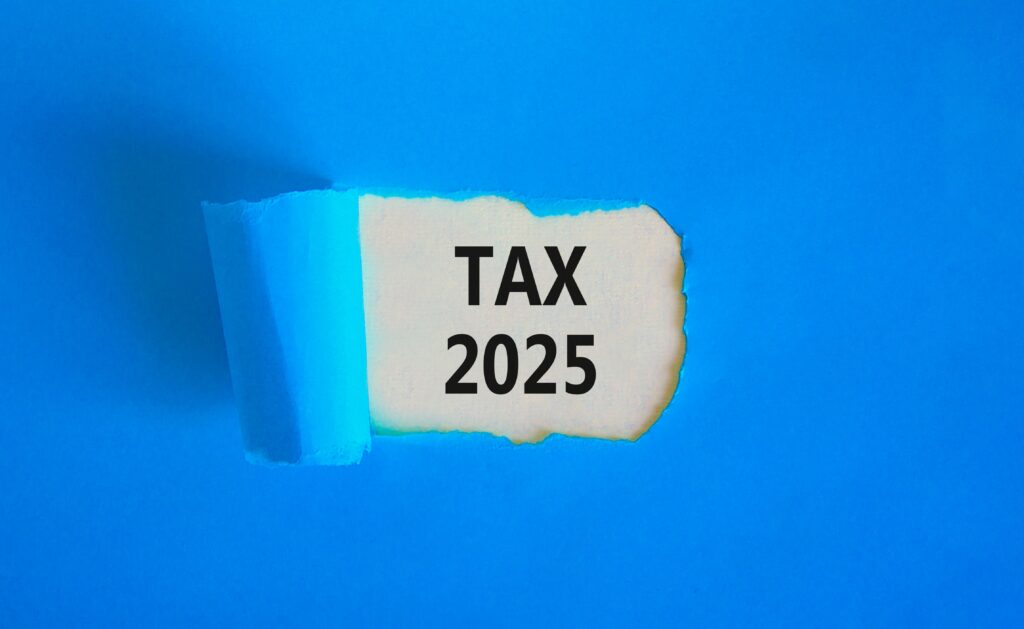State and local tax codes include a huge array of special tax breaks designed to accomplish almost every goal imaginable: from encouraging homeownership and scientific research, to building radioactive fallout shelters and caring for “exceptional” trees.[i] Despite being embedded in the tax code, these programs are typically enacted with tax policy issues like fairness, efficiency, and sustainability only as secondary considerations. Accordingly, these programs have long been called “tax expenditures.” They are essentially government spending programs that happen to be housed in the tax code for ease of administration, political expedience, or both.
In order to allow lawmakers, researchers, and the public to monitor these programs, thirty eight states have enacted laws requiring regularly published reports that list tax expenditures and their size, and a handful of other states publish these reports despite not having a legal requirement to do so.[ii] Most of these requirements have been implemented within the last twenty five years.
Benefits of Tax Expenditure Reports
Although budget experts may disagree on some of the finer points, there is a widespread consensus that tax expenditure reports are an important part of providing a full and complete accounting of the government’s involvement in various issue areas.[iii] Among the benefits of tax expenditure reports are:
1. A fuller picture: At the federal level, for example, thirteen spending programs are complemented by eight different tax expenditures in helping college students pay for their education.[iv] While the spending programs come up for regular review as part of the appropriations process, the tax expenditures receive far less formal scrutiny. Reporting on the existence, and cost, of these tax expenditures is necessary before stakeholders can even begin to understand the government’s full scope of involvement in promoting higher education.
2. Keeping tabs on size: When a new tax expenditure is being debated, fiscal analysts usually attempt to estimate the impact it will have on revenue collections during the next few years. This can be extremely difficult and estimates are often unreliable, especially for years in the more distant future.[v] Reporting on the size of tax expenditures following their enactment allows lawmakers to see whether the policy is having the impact that they anticipated, and ongoing reports can illuminate which tax expenditures have substantially grown or shrunk in recent years.
3. A tax policy education: Most of the complication in state tax codes arises from the existence of tax expenditures. Absent a well-organized tax expenditure report, lawmakers and advocates without an extensive background in tax policy would have little hope of fully grasping the complicated web of exemptions and deductions contained in the state’s laws and regulations, and even more experienced analysts would have no way of knowing for sure which particular tax expenditures were the largest and most important features of that state’s tax code. Tax expenditure reports provide a valuable overview of a complex but central feature of government—its system of raising revenue.
4. Foundation for rigorous analysis: Independent analysts seeking to measure the effects of specific tax expenditures on the economy, the distribution of taxes, or other relevant outcomes are unlikely to be successful if basic information about the tax expenditure is kept from the public.
Common Shortcomings of Tax Expenditure Reports
While most states have come to recognize the value of regularly issuing tax expenditure reports, there remains substantial room for improvement in the quality of many of these reports.[vi] The least valuable tax expenditure reports leave out substantial amounts of important information that would be of use to lawmakers and other interested parties. State tax expenditure reports can fall short of their potential in a number of ways:
1. Incomplete: While as many as forty six states have published a tax expenditure report at some point in their history, a much smaller number of states have published comprehensive reports that estimate the size of all tax expenditures. Especially problematic is the fact that nine states with tax expenditure reports completely omit at least one of their major taxes from the scope of their reports.
2. Outdated: Roughly half the states with tax expenditure reports do not publish the kinds of forward-looking cost estimates that are most valuable to lawmakers. Moreover, a few states routinely wait three years or more before releasing updated tax expenditure estimates, or they release data based on prior years that are so far out of date as to significantly limit their usefulness to lawmakers.
3. Lacking detail: Most states do not disclose essential information such as the number of taxpayers benefiting from each tax expenditure. An even larger group of states fails to provide meaningful details about the population of beneficiaries, such as their level of income.
4. Lacking context: Just twelve states attempt to identify the purpose of each tax expenditure in their reports, and even among these states the reported purpose is often too vague to be helpful. The source of these shortcomings cannot be traced entirely to the reports’ authors, however. Only six states require that lawmakers include clear statements of purpose in legislation creating new tax expenditures.[vii]
Gray Areas Demand More Detailed Reporting, Not Less
Identifying which tax provisions are truly “tax expenditures” is not without controversy. A sizeable and contentious academic literature exists on this subject, and the federal Joint Committee on Taxation (JCT) has in recent years gone back-and-forth between two different methods of identifying tax expenditures—depending on who happened to be in charge of the committee at the time.[viii] At its core, identifying tax expenditures requires determining which tax provisions are part of the basic underlying structure of the tax system, and which provisions are more akin to spending programs that just so happen to be grafted onto that underlying structure.
In some cases this task is very easy. In 2009, for example, Congress passed a tax credit designed to encourage renewable energy that was so obviously akin to a spending program that taxpayers were given the option of claiming the benefit either as a tax credit or as a direct cash payment.[ix] Few analysts could claim with a straight face that the tax credit portion of this program cannot reasonably be classified as a tax expenditure.
Other cases, like state sales tax exemptions for purchases made by businesses, are less clear cut. Public finance scholars often argue that the sales tax should be applied to all final retail consumption, and that businesses should be able to buy products without having to pay the tax. Under this arrangement, every product would be taxed exactly one time—at its final point of sale. This would avoid the problem of tax “pyramiding,” whereby products taxed at every stage of the production process ultimately have a large amount of hidden sales tax built into their final price.
For analysts that view this “ideal” sales tax structure as the basis of their own state’s sales tax, it might be tempting to omit sales tax exemptions for business purchases from their tax expenditure report. These exemptions, the argument goes, are simply “normal” components of a retail sales tax.
In the real world, however, it is not at all clear that any state’s sales tax laws are actually based on the ideal sales tax system mapped out by academics.
Far from applying to all final consumption, state sales taxes exempt enormous swaths of consumer spending, including most personal services—a category covering a full two-thirds of all spending nationwide.[x] In California, for example, the state’s Legislative Analyst’s Office (LAO) estimates that only 33 cents of every dollar spent by consumers is actually subject to the state’s sales tax.[xi]
Just as importantly, it is also not true that business transactions are typically tax exempt. Just 59 percent of all sales tax revenue is collected on final consumption, with the other 41 percent coming mostly from business purchases.[xii] In some states, the share coming from final consumers is as low as 28 percent.
Given the patchwork way in which state sales taxes apply to a portion of consumer spending and a portion of business spending, it is far from obvious which sales tax provisions are fundamental to the tax and which are “extra” features that would qualify as tax expenditures. This confusion is further amplified by the fact that sales tax exemptions for business purchases—which some academics might advocate chiefly as tax policy reform—are routinely touted by lawmakers as a form of economic development policy.[xiii]
Given the uncertainty inherent to tax expenditure reporting, analysts’ best course of action is to err on the side of comprehensiveness by reporting information on all tax provisions that may reasonably qualify as tax expenditures, while explaining in detail the tax policy and non-tax policy rationales for those provisions.[xiv] At their best, tax expenditure reports are purely informational tools that help lawmakers and stakeholders make more informed assessments of the tax code. Very few lawmakers view the mere inclusion of a tax provision in these reports as evidence that the provision is unwarranted or ineffective, and the authors of these reports could do even more to ensure that readers do not jump to this conclusion by including more detailed descriptions of each tax provision.
[i] Alabama Code, Section 40-18-15. Hawaii Revised Statutes, Section 235-19.
[ii] Metcalf, Lori. “The Innovation and Diffusion of State Tax Expenditure Budgets: Examining Determinants of Adoption with Event History Analysis.” PhD Dissertation. George Washington University. May 20, 2012.
[iii] Among the many supporters of tax expenditure reporting are the Government Accountability Office (GAO) and the Organization for Economic Cooperation and Development (OECD). See GAO. “Tax Expenditures Represent a Substantial Federal Commitment and Need to Be Reexamined.” GAO-05-690. September 2005. See also OECD. “Competitive Neutrality: A Compendium of OECD Recommendations, Guidelines and Best Practices.” 2012.
[iv] GAO. “2013 Annual Report: Actions Needed to Reduce Fragmentation, Overlap, and Duplication and Achieve Other Financial Benefits.” GAO-13-279SP. April 2013.
[v] Pew Center on the States.” Avoiding Blank Checks: Creating Fiscally Sound State Tax Incentives.” December 2012. Available at: http://www.pewstates.org/research/reports/avoiding-blank-checks-85899433960
[vi] This discussion draws heavily on: Leachman, Michael, et al. “Promoting State Budget Accountability Through Tax Expenditure Reporting.” Center on Budget and Policy Priorities. May 2011. Available at: http://www.cbpp.org/research/state-budget-and-tax/promoting-state-budget-accountability-through-tax-expenditure
[vii] Those states are Arizona, Colorado, Minnesota, Nevada, New Mexico, and Washington. See ITEP. “Five Steps Toward a Better Tax Expenditure Debate.” October 1, 2012. Available at: https://itep.org/itep_reports/2012/10/five-steps-toward-a-better-tax-expenditure-debate.php
[viii] For an explanation of the methodology that was briefly used during Edward Kleinbard’s tenure as Chief of Staff of the JCT see: Joint Committee on Taxation. “A Reconsideration of Tax Expenditure Analysis.” JCX-37-08. May 12, 2008.
[ix] U.S. Department of the Treasury. “1603 Program: Payments for Specified Energy Property in Lieu of Tax Credits.” Available at: http://www.treasury.gov/initiatives/recovery/Pages/1603.aspx
[x] ITEP analysis of data from the Bureau of Economic Analysis (BEA)
[xi] Taylor, Mac. “Why Have Sales Taxes Grown Slower Than the Economy?” Legislative Analyst’s Office. August 5, 2013. Available at: http://www.lao.ca.gov/reports/2013/tax/Sales-tax/Sales-tax-080513.aspx
[xii] Ring, Raymond J. Jr. “Consumers’ share and producers’ share of the general sales tax.” National Tax Journal. Vol. 52. No. 1. March 1999. Available at: https://www.ntanet.org/NTJ/52/1/ntj-v52n01p79-90-consumers-share-producers-share.pdf
[xiii] Florida Governor Rick Scott. “We are Building Up Florida Manufacturing Jobs.” News Release. January 9, 2013. Available at: http://www.flgov.com/2013/01/09/gov-scott-we-are-building-up-florida-manufacturing-jobs/
[xiv] McIntyre, Michael J. “A Solution to the Problem of Defining a Tax Expenditure.” U.C. Davis Law Review. Vol. 14. No. 1. Fall 1980. Altshuler, Rosanne and Robert D. Dietz. “Reconsidering Tax Expenditure Estimation: Challenges and Reforms.” June 2, 2008. At 37.





